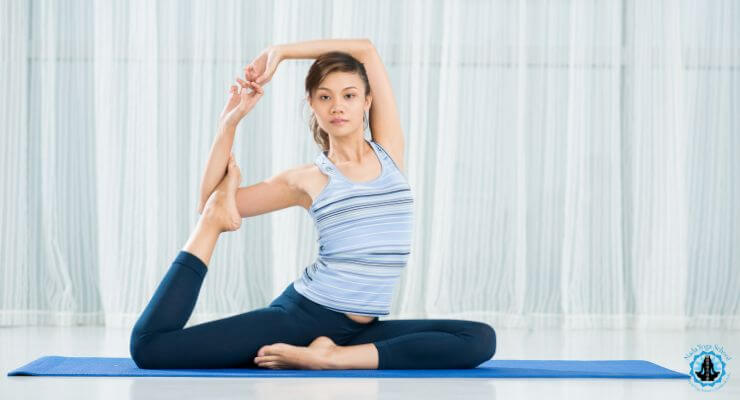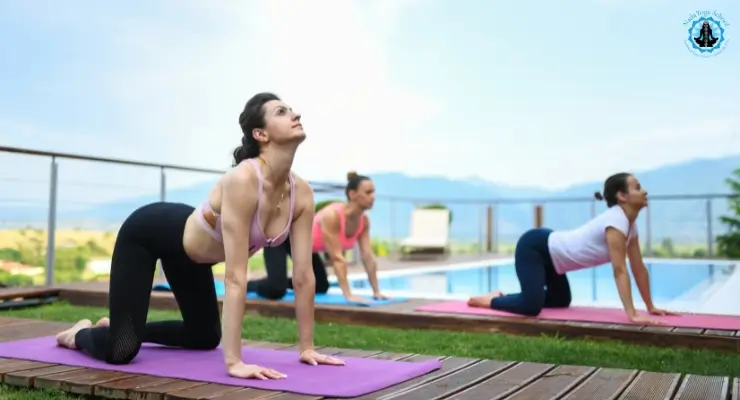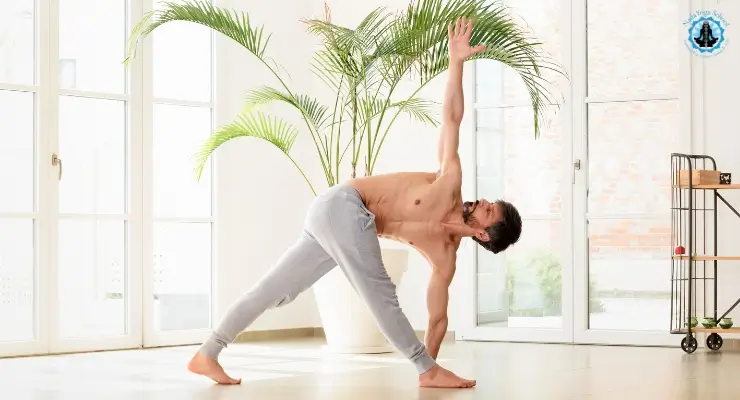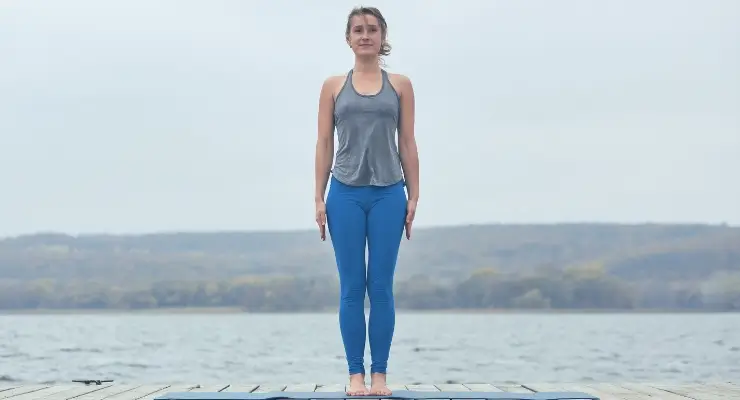Ardha Ushtrasana, or Half Camel Pose, is a modified version of the full Ushtrasana (Camel Pose) and serves as an excellent way for beginners to ease into the backbend poses. It targets the front of the body, stretching the chest, abdomen, and quadriceps, while also strengthening the back muscles and improving spinal flexibility.
How to Do Ardha Ushtrasana (Half Camel Pose)
- Starting Position: Begin by kneeling on the floor with your knees hip-width apart and your hips directly over your knees. Keep your feet flat on the floor, toes pointing behind you.
- Hand Placement: Place your hands on your lower back for support, fingers pointing downwards, and elbows pointing back.
- Entering the Pose: Inhale, and gently push your hips forward, arching your back. Slide one hand down to the heel of the same side if accessible, while the other hand remains on your lower back or reaches up towards the ceiling.
- Deepening the Pose: Keep your chest lifted and your spine long as you deepen the backbend. If comfortable, tilt your head back to look upward, deepening the stretch in your throat and chest.
- Holding the Pose: Hold the pose for 15-30 seconds, breathing deeply. To exit, bring your hand back to your lower back, straighten your torso on an inhale, and return to the kneeling position. Repeat on the other side.
Benefits of Ardha Ushtrasana
- Improves Spinal Flexibility: Gently stretches the spine, enhancing its flexibility and mobility.
- Stretches the Front Body: Opens up the chest, abdomen, and quadriceps, improving posture and breathing capacity.
- Strengthens Back Muscles: Engages and strengthens the muscles of the lower back.
- Stimulates Abdominal Organs: The pose massages the abdominal organs, aiding digestion and improving overall abdominal health.
- Reduces Stress and Fatigue: Helps in relieving stress and fatigue by opening the chest and improving respiration.
Contraindications
- Lower Back and Neck Injuries: Individuals with significant lower back or neck injuries should avoid this pose or practice under expert guidance.
- High or Low Blood Pressure: Those with blood pressure issues should exercise caution, especially when tilting the head back.
- Knee Problems: Practitioners with knee problems should use a folded blanket under their knees for support or avoid the pose if it causes pain.
Modifications and Tips
- Support for Knees: Use a yoga mat or folded blanket under your knees for extra cushioning.
- Hand Position: If reaching for your heel is not possible, keep both hands on your lower back for support, ensuring you still open your chest and gently arch your back.
- Focus on Alignment: Ensure your hips remain over your knees, and avoid straining the neck when tilting your head back.
Conclusion
Ardha Ushtrasana serves as a gentle introduction to backbends, offering a range of benefits from improved spinal flexibility and strength to stress relief and enhanced respiratory function. As with all yoga practices, listen to your body’s signals and modify the pose as needed to suit your current level of flexibility and strength.





Pingback: How to do Ushtrasana (Camel Pose), Its Benefit & Contraindication